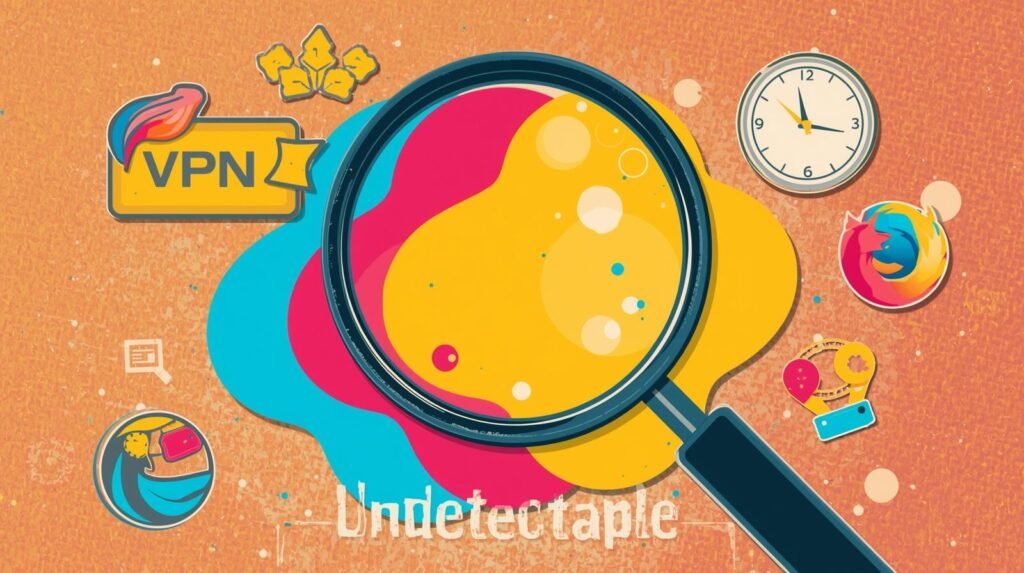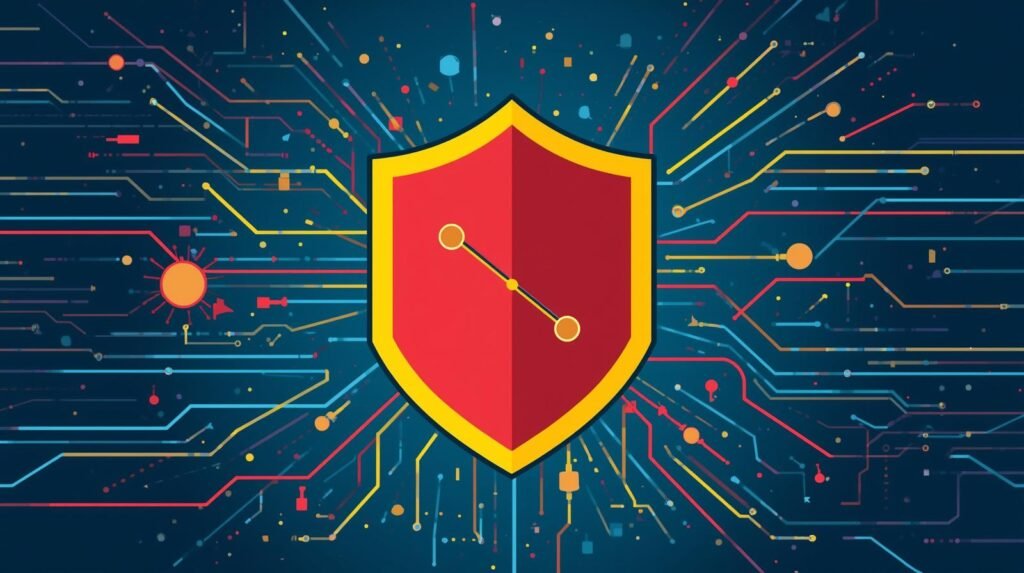9 Proven Steps to Full Privacy Online (Stay Undetectable Like a Pro) 🔒
How I Built My Home Cybersecurity Lab (Step-by-Step) 🔧: Part 3/3
How I Built My Home Cybersecurity Lab (Step-by-Step) 🔧: Part 3/3
When I first started working on full privacy online in my home cybersecurity lab, I honestly thought a VPN alone would keep me safe. But my very first test on ipleak.net proved me wrong. Even with the VPN connected, my real country and time zone leaked out instantly. It was frustrating and a little scary — I realized that I was far from undetectable.
That’s when I decided to go deeper. I began experimenting with locale settings, browser tweaks, and DNS hygiene. I built my own kill switch and panic button scripts after losing connectivity one night and seeing my traffic spill outside the VPN. Over time, I developed a layered workflow that made my lab activity much harder to trace.
This post is my full story: step by step, how I turned my lab from “VPN-only” into a setup where practical undetectability became part of my daily routine.
Key Takeaways 🔑
- Full privacy online takes more than a VPN — you must also adjust your system and browser settings.
- I always set my VM to en_US.UTF-8 and match the time zone and keyboard layout with my VPN exit.
- For browsers I rely on Tor, LibreWolf, or Firefox with Resist Fingerprinting, and I always disable WebRTC.
- My self-made kill switch and panic button scripts have already saved me from leaks multiple times.
- Before I publish anything, I thoroughly sanitize pcaps, logs, and screenshots.
- I constantly test my setup using dnsleaktest.com, ipleak.net, and browserleaks.com.
- I treat OpSec as a layered process — every adjustment adds another shield.
What “undetectable” actually means 🕵️♂️
I don’t believe in absolute anonymity — it simply doesn’t exist. What I aim for instead is to make tracking me so difficult and time-consuming that it’s not worth the effort. For me, “undetectable” means standardizing or stripping away metadata and fingerprints that could tie activity back to me.
My approach:
- Consistency: aligning system, browser, language, and time zone with my VPN exit.
- Leak prevention: eliminating WebRTC, DNS, and IPv6 leaks.
- Sanitization: cleaning logs and screenshots before sharing them.
- Secure documentation: keeping raw evidence encrypted but publishing only sanitized copies.


1) VPN selection: exit geography, private DNS & multi-hop 🌍🔐
In the beginning, I just picked a random VPN server. That was a mistake. I quickly learned that exit geography matters. Now I always choose servers in countries whose time zones and languages I can also replicate in my VM.
What I look for:
- Private DNS — no leaks back to my ISP.
- No-logs policy with independent audits if possible.
- Multi-hop options when I want extra obfuscation.
- WireGuard support — my go-to for speed and simplicity.
2) VM hardening & locale: set VM language to en_US.UTF-8 🗽
At first, I ran my VM in nl_BE.UTF-8. The moment I tunneled through a US VPN, the mismatch gave me away.
Now I always set the locale to en_US.UTF-8:
sudo locale-gen en_US.UTF-8
sudo update-locale LANG=en_US.UTF-8
export LANG=en_US.UTF-8After a reboot, I double-check with locale. It’s a small change, but it prevents my browser headers from exposing my real language.
3) Browser settings: set Firefox locale to en-US & disable WebRTC 🦊🛡️
The first time I ran a leak test, I realized my browser still advertised “Dutch” as my language. From then on, I always change this immediately.
Set browser language to en-US 🌐
Firefox → about:config → intl.accept_languages = en-US, en
Chromium → keep only English (United States) at the top.
Disable WebRTC 🚫One of my biggest shocks came when I discovered WebRTC leaking my local IP — even with the VPN active. That’s why I always set:
about: config → media.peerconnection.enabled = false


4) DNS hygiene — prevent DNS leaks 🧪🔒
I once assumed my VPN was handling DNS. A quick test on dnsleaktest.com proved me wrong. My ISP was still receiving queries.
Here’s what I do now:
Use VPNs that force DNS through their own resolvers.
Sometimes enable DoH in my browser as an extra layer.
Disable IPv6 when my VPN doesn’t support it.
5) Time zone and keyboard layout: match the VPN exit ⏰⌨️
In one test, my VPN exit was New York, but my VM still showed Brussels. Leak detectors caught it instantly.
So now I always:
- timedatectl set-timezone America/New_York
- Switch the keyboard layout to US — even if it feels awkward to type.
For multiple exit countries, I maintain separate VMs with the right settings preconfigured.
6) Application & OS level hardening 🛡️
I also noticed that applications leak telemetry, not just browsers. Updates, syncs, and unique IDs all leave trails.
My routine:
- Disable auto-sync and auto-updates.
- Use LibreWolf or Firefox with Resist Fingerprinting enabled.
- Keep extensions minimal: uBlock Origin, NoScript, and Cookie AutoDelete.


7) Kill switch & panic patterns 🛑⚡
One night, my VPN dropped and all my traffic flowed outside the tunnel. That was the moment I stopped trusting providers blindly and built my own scripts.
- Kill switch: blocks all traffic except through the VPN.
- Panic button: shuts down network services, kills VPN interfaces, and sets the firewall to deny-all.
I always test these scripts in a disposable VM snapshot before trusting them.
8) Logging & sanitization 🧹
When I wrote my first blog post, I realized even small pcaps contained more personal data than I expected. From then on, I made sanitization a strict rule.
My workflow:
- 1. Collect all artifacts in an encrypted folder.
- 2. Generate checksums.
- 3. Redact IPs and fuzz timestamps with editcap.
- 4. Publish only sanitized excerpts.
9) Testing & validation 🔍✅
I never trust assumptions anymore. Before publishing, I test thoroughly:
These sites show me right away if I’ve missed something.
Extra Section — Hiding Keyboard Layout Fingerprints Without QWERTY 🙈⌨️
thought I needed to buy a US QWERTY one. Luckily, I found other ways to hide layout fingerprints.
- 1. Tor Browser 🧅It spoofs keyboard events — perfect for safe screenshots.
- 2. LibreWolf / Firefox RFP 🐺Set privacy.resist Fingerprinting = true. This masks locale and keyboard differences.
- 3. Script blocking 🧱NoScript and uBlock block JavaScript attempts to capture keystrokes.
- 4. Anti-fingerprinting add-ons 🧬🛡️CanvasBlocker, Trace, and similar tools reduce uniqueness.
- 5. FPMon 🔎This extension alerts me whenever a site tries to fingerprint me.
- 6. My workflow 🧪💻Daily use → AZERTY for comfort.
Publication VM → en_US locale, Tor Browser or LibreWolf+RFP, NoScript on deny.
Expert voices
“Security is a process, not a product.”
“The human element is the weakest link in the security chain.”
“Arguing that you don’t care about the right to privacy…”


Frequently Asked Questions❓
❓ How can I stay undetectable online while using a VPN?
By combining VPN with locale alignment (VM + browser en-US), disabling WebRTC, fixing DNS leaks, and sanitizing logs before publishing.
❓ Does setting VM to en_US.UTF-8 guarantee full privacy?
No. It removes one clue, but I also align time zone, DNS, keyboard layout, and sanitize artifacts.
❓ How do I sanitize pcaps for blog use?
I filter out my IP with tcpdump, trim timestamps with editcap, and redact sensitive data before publishing.
❓ Why should I disable IPv6?
Because many VPNs don’t tunnel IPv6 properly, which can cause leaks.
❓ Can browser extensions leak my privacy?
Yes. Too many unique extensions make your fingerprint stand out. I stick to a minimal, common set.
❓ How do I check if my privacy setup works?
I use dnsleaktest.com, ipleak.net, and browserleaks.com regularly.
❓ Can Tor replace a VPN for full privacy online?
Tor hides origin well, but it’s slower and often blocked. For reproducible labs, VPN with hygiene works better.
❓ How do I avoid leaking personal data in screenshots?
I blur/redact IPs, hostnames, and usernames, and scrub metadata before sharing.
❓ What’s the difference between a kill switch and a panic button?
Kill switch = blocks traffic when VPN fails. Panic button = full lockdown: kill VPN, stop services, deny all traffic.
Series Finale & Free eBook Announcement
This is the final post in my cybersecurity and privacy series!A free eBook with all tips, step-by-steps, and best practices will soon be available to everyone who subscribes to the newsletter.
Overview of all parts in this series:
- Part 1: How I Built My Home Cybersecurity Lab (Step-by-Step) 🔧
- Part 2: Configuring the Cudy WR3000 as a ProtonVPN WireGuard Router (Step-by-Step Guide)
- Part 3: 9 Proven Steps to Full Privacy Online (Stay Undetectable Like a Pro) 🔒
Want the free eBook?
Sign up for the newsletter and get it delivered as soon as it launches. Stay ahead with new hacking guides, privacy tips, and exclusive resources!
Dircover all my post on Cybersecurity and Ethical Hacking

